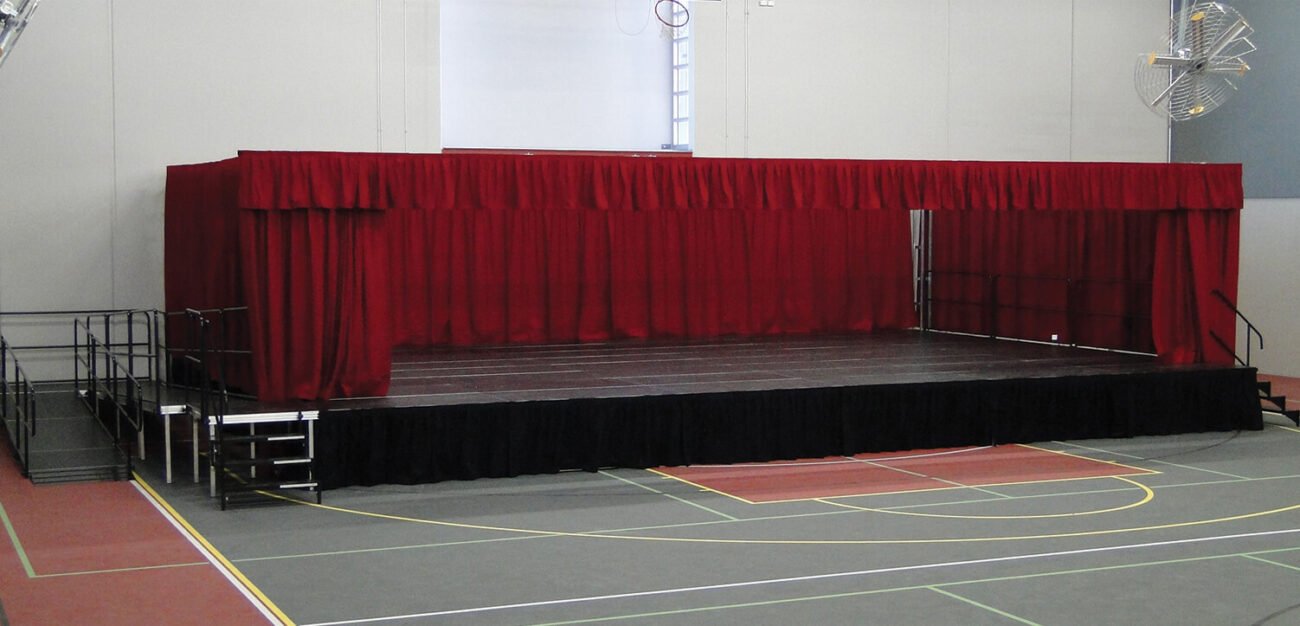Portable staging has changed how performances look and feel. Directors no longer work around fixed stage layouts. Schools, community groups, and touring companies use modular platforms to shape productions that would not work on static stages.
Here are ten productions where portable staging played a role in transforming the performance.
1. Shakespeare in the Round
A small community theatre reconfigured portable platforms into an in-the-round layout. The audience sat on all sides. Performers moved across multiple levels. The intimacy gave Shakespeare’s dialogue more impact. Portable staging made it possible without rebuilding the venue.
2. Touring Children’s Musical
A travelling company used lightweight stages to bring a musical to schools across the UK. Each venue had different floor space. The troupe carried modular platforms on panel trolleys. Every school saw the same quality performance because the staging adapted.
3. Choir Festival with Tiered Levels
A local choir festival used three-tier platforms. Without them, performers would block each other from view. Portable staging gave every singer a clear sightline. The result was better sound projection and a stronger connection with the audience.
Other Post: Portable Stage Podium: Elevate Every Word with Confidence
4. Outdoor Summer Play
A town theatre staged a play in the park. Portable stage platforms created a raised stage on uneven ground. The production reached audiences who never visit indoor venues. Without portable staging, the play would have required an expensive temporary structure.
5. University Student Showcase
Drama students needed quick changes between performances. Portable staging allowed different layouts across the same evening. One show used a thrust stage. The next needed a flat platform. Staff reconfigured in minutes. The showcase ran smoothly and on schedule.
6. Dance Performance with Multi-Level Platforms
A dance school created visual depth using different stage heights. Portable staging allowed lifts, jumps, and floorwork to happen on multiple levels. The layered stage design gave parents and audiences a better view of every movement.
7. School Talent Show
A secondary school talent show featured singers, comedians, and magicians. Portable staging made setup simple. Staff moved platforms in and out to fit each act. The result was a professional experience for students and a seamless event for parents.
Other Post: Portable Stage Solutions for Schools: From Assemblies to Drama Shows
8. Touring Puppet Theatre
A puppet theatre company used portable stages to set up quick backdrops in libraries and community centres. Lightweight platforms supported curtains and lighting. The flexible system allowed the group to perform in spaces never designed for theatre.
9. Debate Competition
Portable staging also works outside traditional theatre. A debate competition used platforms to raise speakers. Judges and audiences saw and heard clearly. The stage adapted to classrooms, lecture halls, and community spaces with no disruption.
10. Modern Experimental Theatre
One theatre company ran an experimental production that required constant reconfiguration. Portable staging allowed actors to move platforms during the performance. The stage itself became part of the story. A permanent stage could never deliver that experience.
Why Portable Staging Makes a Difference
These productions show how portable staging supports creativity and accessibility. Key takeaways:
- Flexibility: Works for different formats in one venue.
- Transportability: Touring groups maintain consistent quality.
- Audience impact: Multi-level staging improves sightlines and sound.
- Accessibility: Outdoor and non-traditional venues become performance-ready.
- Cost control: One system supports multiple productions without structural change.
Theatre groups save money, expand audiences, and deliver more memorable experiences.
Practical Advice for Choosing Portable Staging
If you want similar results, focus on these factors before buying:
- Platform strength: Check weight capacity for performers, instruments, and props.
- Surface grip: Ensure anti-slip finishes for safety.
- Modularity: Look for platforms that connect securely at different heights.
- Ease of transport: Pair with stage panel trolleys for quick movement.
- Storage space: Choose foldable or stackable models.
Ask other theatres or schools about their choices. Real-world feedback is more useful than a catalogue description.
Final Word
Portable staging is not a luxury. It is a practical tool that supports modern theatre at every level. Schools, community groups, and professional companies rely on it to adapt, save money, and bring performances to new spaces.
These ten examples show the range of what is possible. The question is not whether portable staging works. The question is how you will use it in your own productions.
Find out more about Flexible stage platforms for theatre:
https://www.portablestage.co.uk/theatre-staging-solutions-uk/
https://www.portablestage.co.uk/accessible-mobile-stages/
